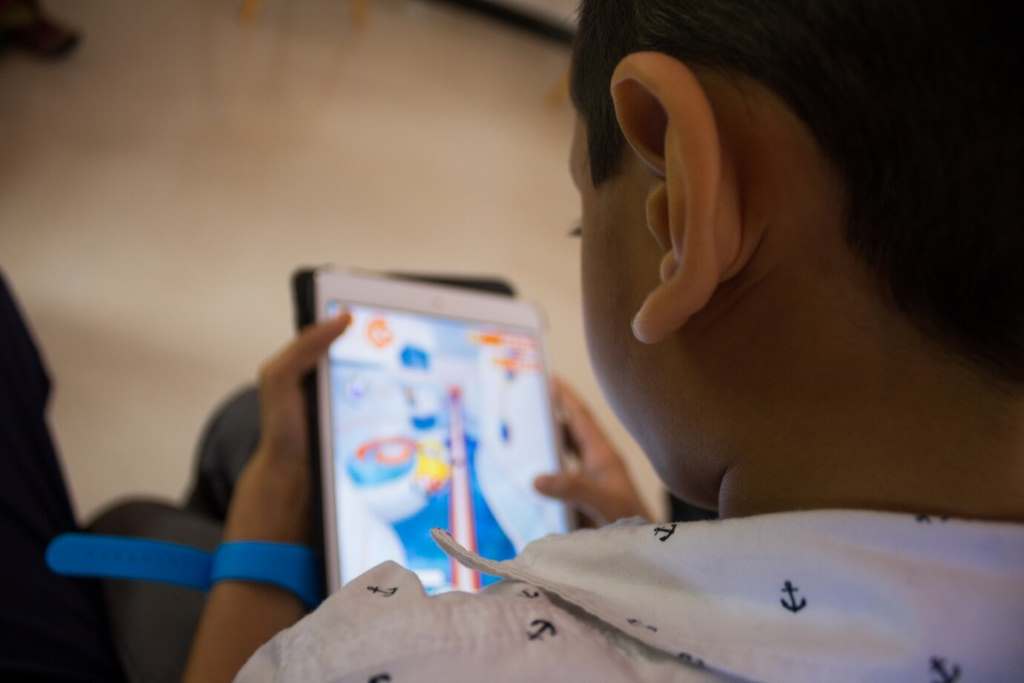Best Apps That Teach Emotional Intelligence to Kids: A Parent’s Journey

As a parent, I’ve always wanted my kids to grow up kind, empathetic, and resilient. But teaching emotional intelligence—understanding and managing emotions—felt like navigating a maze. One evening, after my 8-year-old, Emma, had a meltdown over a lost toy, I realized she needed more than my pep talks. I stumbled upon apps that teach emotional intelligence to kids, and they transformed our home. These tools turned tantrums into teachable moments, blending fun with learning. In this post, I’ll share my journey, spotlight the best apps, and explain how they help kids thrive emotionally. Ready to empower your child? Let’s dive in.
Why Emotional Intelligence Matters for Kids
Emotional intelligence (EI) is the ability to recognize, understand, and manage emotions. For kids, it’s the foundation of healthy relationships and self-confidence. I noticed Emma struggled to name her feelings, often lashing out in frustration. Research backs this up: a 2015 study by the American Psychological Association found that kids with higher EI perform better academically and socially. Apps make learning EI fun, using games and stories to teach empathy and self-regulation. They’re like training wheels for emotions, helping kids navigate life’s ups and downs.
Top Apps for Building Emotional Intelligence
Several apps stand out for teaching kids EI effectively. Here are my favorites after testing them with Emma:
- Smiling Mind: This mindfulness app offers guided meditations for kids as young as 7. Emma loved the calming voice guiding her to focus on her breath, reducing her anxiety. It’s free and backed by psychologists, making it trustworthy. However, younger kids might need parental guidance.
- Breathe, Think, Do with Sesame: Perfect for preschoolers, this Sesame Street app teaches problem-solving through fun scenarios. Emma’s little brother, Liam, giggled while helping a monster calm down. It’s free but limited in scope for older kids.
- Mood Meter: Developed by Yale’s Center for Emotional Intelligence, this app helps kids identify and track emotions. Emma learned to label her feelings, like “disappointed” instead of just “mad.” It costs $0.99 but offers robust features. Some kids might find it less engaging without parental involvement.
These apps blend education with entertainment, making EI accessible. Always check age suitability and try them with your child first. Also, they’re engaging, which keeps kids coming back. However, not all apps are created equal—some lack depth or feel too gamified. Choosing the right ones, like adventure traveling apps, makes all the difference.
How These Apps Work Their Magic

These apps use interactive methods to teach EI. Smiling Mind, for instance, employs mindfulness exercises to help kids stay present. Emma’s bedtime routine now includes a 5-minute meditation, calming her restless mind. Breathe, Think, Do uses storytelling, letting kids guide characters through emotional challenges. Liam learned to take deep breaths when upset, mimicking the app’s monster. Mood Meter introduces a color-coded chart to categorize feelings, which helped Emma articulate her emotions better. According to a 2020 study by Yale University, tools like these improve emotional regulation by 20% in kids aged 5–10. The apps encourage practice, turning lessons into habits. However, overuse can lead to screen fatigue, so balance is key. I set a 20-minute daily limit, blending app time with real-world talks.
Benefits of Using EI Apps for Kids
EI apps offer numerous advantages, transforming how kids handle emotions. Here’s why they’re worth trying:
- Engaging Learning: Games and stories make EI fun, keeping kids interested.
- Improved Communication: Apps teach kids to express feelings clearly, reducing conflicts.
- Accessible Anytime: Most apps are mobile, perfect for busy families.
- Safe Environment: Kids practice emotions without fear of judgment.
- Parental Insights: Some apps, like Mood Meter, offer reports on your child’s progress.
- Cost-Effective: Many are free or low-cost, unlike therapy sessions.
Despite these perks, apps aren’t a cure-all. They work best alongside parental guidance. Emma’s progress soared when we discussed what she learned, reinforcing the apps’ lessons.
Common Mistakes Parents Make with EI Apps
Parents can stumble when introducing EI apps. Here are pitfalls to avoid:
- Over-Reliance: Apps aren’t a substitute for real-world interaction. Balance them with family talks.
- Ignoring Age Fit: Choosing apps too advanced or simplistic frustrates kids. Check age recommendations.
- No Follow-Up: Apps teach concepts, but kids need parents to apply them. Discuss lessons regularly.
- Excessive Screen Time: Too much app use can strain eyes or reduce playtime. Set limits.
- Skipping Trial Runs: Test apps first to ensure they suit your child’s needs.
- Expecting Instant Results: EI takes time. Be patient with progress.
Avoiding these mistakes maximizes the apps’ impact. I learned this when I initially let Emma use Mood Meter unsupervised, only to find she needed my help to understand it.
Tips for Choosing the Right EI App
Selecting the best app requires care. Here’s how to pick wisely:
- Check Credentials: Opt for apps backed by experts, like Smiling Mind’s psychologist-led design.
- Read Reviews: Parent feedback on app stores reveals real-world effectiveness.
- Test Interactivity: Apps with games or stories, like Breathe, Think, Do, engage kids better.
- Consider Cost: Free apps are great, but paid ones like Mood Meter often offer more depth.
- Age Appropriateness: Match the app to your child’s developmental stage for best results.
- Monitor Engagement: If your child loses interest, try another app to keep learning fun.
I wasted time on flashy apps with little substance before finding these tips. They helped me choose apps Emma and Liam love.
Integrating Apps into Daily Life
Making EI apps part of your routine is simple but requires consistency. I started with short sessions—10 minutes after school for Emma, 15 for Liam. We used Smiling Mind before bed to wind down, creating a calming ritual. For Mood Meter, we set a daily check-in where Emma logged her emotions, sparking conversations. I also paired app lessons with real-life scenarios. When Emma felt jealous of a friend, we used Breathe, Think, Do’s strategies to talk it out. Balance is crucial—apps shouldn’t replace play or family time. I limit screen time to 30 minutes daily, ensuring variety. Additionally, I check in weekly to see if the apps still engage them. If not, we explore new ones together. This approach keeps EI learning seamless and impactful.
Challenges and How to Overcome Them

EI apps aren’t perfect. Some kids, like Liam, find them boring after a while. To counter this, I rotate apps every few weeks to keep things fresh. Another challenge is inconsistent use—busy schedules can derail routines. Setting reminders on my phone helped us stay on track. Some apps, like Mood Meter, require parental involvement, which can feel time-consuming. I tackled this by scheduling 10-minute sessions during dinner prep. Technical issues, like app crashes, also pop up.
Ensure your device is updated and check for app patches. Finally, kids might resist labeling emotions at first. Be patient and model the behavior yourself. When I shared my feelings with Emma, she opened up too. Overcoming these hurdles takes effort, but the results—calmer, happier kids—are worth it.
A Parent’s Success Story
Six months ago, Emma’s meltdowns were a daily ordeal. After discovering Smiling Mind, things changed. She began meditating nightly, and her outbursts dropped noticeably. Mood Meter helped her name emotions, turning “I’m mad” into “I feel left out.” Liam, only 5, loved Breathe, Think, Do, mimicking its breathing exercises during tantrums. These apps didn’t just teach skills—they brought us closer. We now talk openly about feelings, something I never did as a kid. The journey wasn’t smooth; I made mistakes, like pushing apps without explaining them. But with patience, we found a rhythm. Today, Emma handles conflicts better, and Liam’s learning empathy early. These apps that teach emotional intelligence to kids are game-changers, and I’m grateful for them.
Conclusion
Raising emotionally intelligent kids is a gift that lasts a lifetime. Apps that teach emotional intelligence to kids, like Smiling Mind and Mood Meter, make this journey fun and effective. They’ve helped my family turn chaotic moments into opportunities for growth. By choosing the right apps and blending them with real-world talks, you can nurture empathy and resilience in your child. Ready to start? Explore these apps today and see the difference. Share your favorite EI apps or tips in the comments below—I’d love to hear your story! Or, pass this article along to other parents who could use a helping hand.
FAQs
What is emotional intelligence for kids?
Emotional intelligence is the ability to understand and manage emotions, helping kids build empathy and resilience.
Are EI apps safe for young children?
Yes, most EI apps are designed for kids and are safe, but always check age ratings and test them first.
How long should kids use EI apps daily?
Limit use to 15–30 minutes daily to balance learning with play and avoid screen fatigue.
Can EI apps replace therapy for kids?
No, apps support EI but aren’t a substitute for professional therapy if your child needs it.
Where can I find reliable EI apps?
Check app stores for apps like Smiling Mind or Mood Meter, and read parent reviews for insights.








